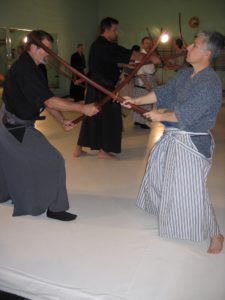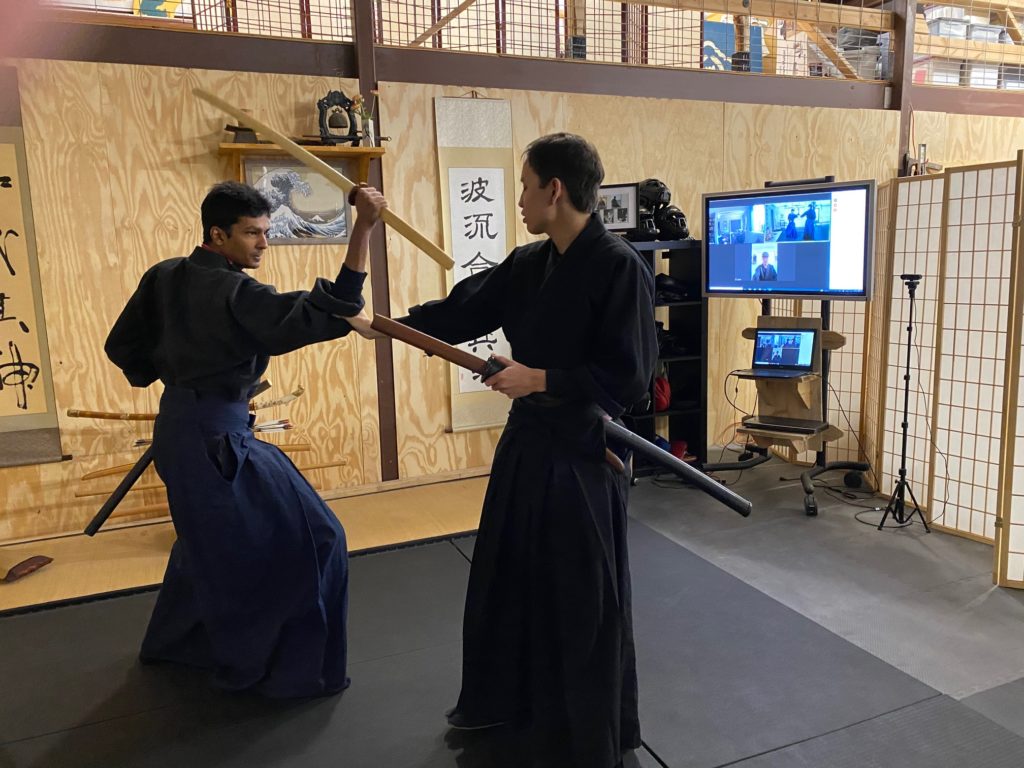The Movement Itself Facilitates the Outcome
Sanrin Mountain Dojo starts every week off with a topic, and/or Principle, that we focus on. Our Mokuroku is followed, and sometimes what we are studying is the training for a specific Principle of our art. Last week’s classes focused in on “The Movement Itself Facilitates the Outcome”.
Timing, Distance, and Relationship. coming together… triggers autonomic responses. As an example, this is the foundation of basketball and football “plays”. That triggering of autonomic response to delivered stimulus/stimuli can be most easily (at first) realized through understanding the peripheral recognition when using the eyes. This is the most obvious and objective form of “seeing”. This interaction with the eyes goes both ways. Eyes can be fooled! With just about everyone who is not sight challenged, sight is the first focus of information gathering for decision.
Modern man has diminished scent and hearing, yet these are certainly part of the “go to” for many people. Primal practices, like hunting and tracking, still work to develop and use these senses for accomplishment of tasks along with sight.
An example is the use of pushups for military training. Who has ever done a pushup as part of their combat interaction with an enemy? … and yet every modern military, that I know of, uses pushups in training.
Tactile recognition in grappling and connection with hands or other touching body parts is another way we combatively perceive movement and force. The ability to “read” another person’s “body language” or posture/posturing is where applied psychology ties into the physical. Intuition or spontaneous knowing that delivers subconscious processing to actionable information is where we tap into the psychic realm.
Psychic realm? Danger Will Robinson! Warning klaxons! Toro!
Well now… faking out an opponent is an everyday practice in the martial and sports world. For the samurai, and other types of armed professionals, past and present, training to perceive deeper into opponents is a skill set to be acquired and used. It’s also the skillset that is easiest to get way off base with. The best test of the psychic realm is physical pressure and duress. This is an area where grappling practice and direct contact prevail. (I believe that claiming one as more conclusive than the other is, well, shortsighted.)
But what about seeing the “chess moves”? How about “reading the battlefield”? These are all standard ideas and trainable practices used in both sport and military science that fuel the higher access of training deliverables.
With practice and deep observation, the use of movement alone, or in cohesive delivery of what is or is felt to be force; is something that can be trained for and used practically. The training exercises are often not practical in form. (An example is the use of pushups for military training. Who has ever done a pushup as part of their combat interaction with an enemy – and yet every modern military, that I know of, uses pushups in training.)

An example of Williams sensei taking my balance, and “breaking” my posture, in fast paced kenjutsu kata… cutting right through my cut, and taking my center by targeting my eyes.
In Nami ryu Aiki Heiho, we take this training head-on, through the time and pressure-tested medium of kenjutsu kata. Classical and classically derived kenjutsu kata are prearranged sequences that train the eye, the mind, and the nerves to access reality beyond the use of simple force application. Edged combat is one of the ultimate tests of reality.
